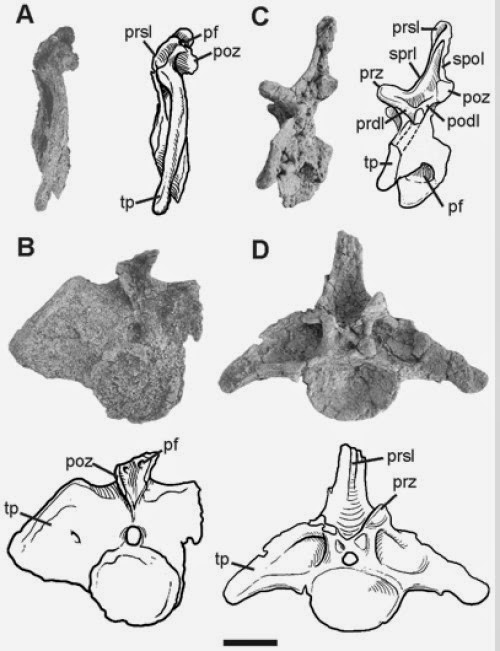
The discovery of a new sauropod dinosaur species, Leinkupal laticauda, found in Argentina may be the first record of a diplodocid from South America and the youngest record of Diplodocidae in the world, according to results published May 14, 2014, in the open access journal PLOS ONE by Pablo Gallina and colleagues from the Fundación Azara (Universidad Maimónides), and Museo E. Bachmann, in Argentina.
Diplodocids are part of a group of sauropod dinosaurs known for their large bodies, as well as extremely long necks and tails. Scientists have identified a new diplodocid sauropod from the early Cretaceous period in Patagonia, Argentina — the first diplodocid sauropod discovered in South America.
Though the bones are fragmentary, scientists found differences between this species and other diplodocid species from North American and Africa in the vertebrae where the tail connects to the body.
These differences suggest to the authors that it may warrant a new species name, Leinkupal laticauda.
Additionally, since Leinkupal laticauda apparently lived much later than its North American and African cousins, its existence suggests that the supposed extinction of the Diplodocidae around the end of the Jurassic or beginning of the Cretaceous period didn’t occur globally, but that the clade survived in South America at least during part of the Early Cretaceous.
Note: The above story is based on materials provided by PLOS.










